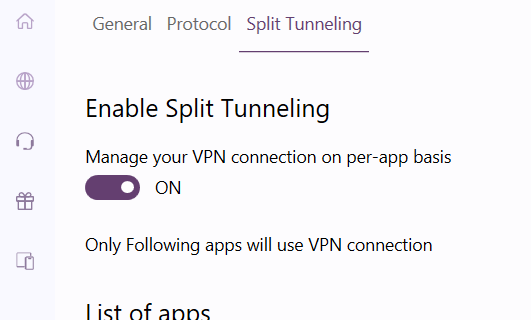
VPN split tunneling is a VPN feature that allows you to route specific applications through the VPN while leaving other applications untouched. In other words, it allows you to specify some traffic going through VPN, and the others the normal way.
Depending on how you “split” the traffic, split tunneling can be divided into the following three types:
| App-based split tunneling | Only traffic from the selected apps goes through the VPN channel. |
| URL-based split tunneling | You configure the settings of what URLs you will access with the VPN connection and what without. |
| Inverse split tunneling | All traffic goes through the VPN channel excluding the apps that you select. |
Benefits of VPN Split Tunneling
The idea behind this split tunneling is to provide a more secure connection for certain applications, while leaving other applications using the more direct connections. This is a great option if you want to make sure your important data is protected when it leaves your network, but don’t want to go all in, slowing down other activities, with a global VPN setting.
VPN services that come with split tunneling
There are a lot of VPN services allows you to set up this feature very easily with their friendly software UI. The top ones we recommend you try are:
- NordVPN – Top choice for split tunneling.
- ExpressVPN – A VPN that has a router app with split tunneling.
- PureVPN – One of the first VPNs that offer the split tunneling feature.
Configuring split tunneling with these services only take a few steps. Also, these apps allow you to use split tunneling on nearly all operating systems. So you can enjoy this feature with no hassle!


